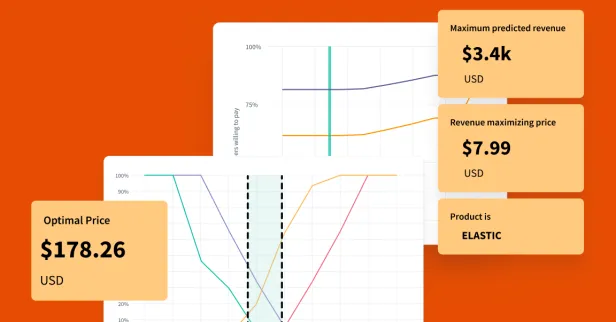Understanding consumer preferences and predicting their buying behavior is both an art and a science. One of the most powerful tools for achieving this is Conjoint Analysis. This versatile technique provides businesses with a data-driven approach to uncover what truly matters to their customers. Whether you’re deciding on product features, pricing strategies, or market positioning, Conjoint Analysis offers actionable insights that can transform decision-making.
This blog explores the ins and outs of conjoint analysis: what it is, why it matters, when to use it, and the various types of conjoint methods available.
What is Conjoint Analysis?
Conjoint analysis is a statistical technique used in market research to determine how people value different components of a product or service. By presenting respondents with a series of choices or trade-offs, this method uncovers the relative importance of individual attributes and their impact on decision-making.
Imagine a car manufacturer trying to understand whether buyers care more about fuel efficiency, price, or brand reputation. Conjoint analysis helps quantify these preferences, enabling the manufacturer to design offerings that align with consumer priorities.
What is the Purpose of Conjoint Analysis?
At its core, conjoint analysis aims to decode the customer’s decision-making process. Businesses rely on this method to:
- Prioritize product features: Determine which features are non-negotiable for customers and which ones are less influential.
- Optimize pricing strategies: Identify price points that customers find acceptable while balancing profit margins.
- Improve market segmentation: Uncover variations in preferences across different customer groups to better target offerings.
- Enhance forecasting accuracy: Predict market share or customer adoption based on how a product aligns with their preferences.
- Support product development: Guide design teams in creating products tailored to market demand.
The ultimate purpose of conjoint analysis is to empower organizations to make informed, customer-centric decisions that maximize value for both the business and its customers.
What to Conduct a Conjoint Analysis?
Conjoint analysis is particularly useful in situations where decisions hinge on understanding trade-offs. You should consider it if:
- You’re developing a new product or service: Assess the ideal combination of features to include and at what price point.
- You’re revising an existing offering: Identify changes that would boost market appeal without alienating current customers.
- You’re evaluating pricing sensitivity: Understand how price changes impact perceived value and purchase likelihood.
- You’re exploring market entry: Compare how your product might perform against competitors in a new market.
- You need to understand consumer preferences in depth: Get granular insights into how consumers rank different attributes of a product.
By providing clarity in complex scenarios, conjoint analysis acts as a strategic compass for businesses navigating competitive landscapes.
The Different Types of Conjoint Analysis
Conjoint analysis is not a one-size-fits-all method. Depending on the research objectives, budget, and complexity of the study, different types of conjoint techniques can be employed. Here’s a brief overview of the most common methods:
| WHAT IT IS | WHEN TO USE | ADVANTAGES | CHALLENGES | |
| MENU-BASED | Focuses on products or services that involve a menu of options, where customers select multiple components independently. | Industries like telecommunications (e.g., selecting internet speeds, channels, and add-ons) or quick-service restaurants (e.g., customizing meal combos). |
|
Requires advanced design and analysis techniques due to its complexity. |
| TWO-ATTRIBUTE TRADE-OFF | Involves comparing two attributes at a time to evaluate trade-offs. Respondents are asked to indicate their preference between pairs of options, each varying only in two attributes. | Best for early-stage research when you need to explore basic trade-offs. |
|
Limited in scope; doesn’t capture interactions between multiple attributes. |
| FULL-PROFILE | Respondents evaluate complete product profiles where all attributes vary simultaneously. This method mimics real-life decision-making scenarios. | To understand the overall importance of attributes when customers evaluate products holistically. |
|
Can become cognitively demanding if the number of attributes or levels is too high. |
| ADAPTIVE | This computerized method adapts questions based on previous responses. It focuses on attributes most relevant to the respondent, streamlining the survey process. | Best for studies involving a large number of attributes or when respondent time is limited. |
|
|
| CHOICE-BASED | Respondents choose from a set of product profiles rather than rating or ranking them. CBC simulates real-world purchase decisions. | Ideal for understanding market share and competitive positioning. |
|
Requires a larger sample size for robust analysis. |
Choosing the Right Conjoint Analysis Method
Selecting the appropriate conjoint analysis method depends on factors such as:
- Research objectives: Are you focused on pricing, feature prioritization, or market share?
- Complexity of the offering: Does your product involve multiple interdependent components?
- Budget and time: Do you need quick results, or can you invest in a more detailed study?
- Sample size and expertise: Do you have access to enough respondents and analytical resources?
By aligning the method with your specific needs, you can extract maximum value from your conjoint analysis study.
Conjoint analysis is a game-changer for businesses seeking to decode customer preferences and craft winning strategies. From optimizing product features to determining ideal pricing, this method equips organizations with the insights needed to thrive in competitive markets.
While the variety of conjoint methods may seem overwhelming, understanding their unique applications ensures you select the best approach for your research objectives. Whether you're customizing a menu of options, simulating real-world choices, or ranking attributes, there’s a conjoint analysis method that can deliver the clarity you need.
SightX Automated Conjoint Analysis Software
SightX also offers a best-in-class suite of easy-to-use pricing research tools that will predict and maximize your revenue, and project market share. What's better than that.
Tap into the power of the SightX Automated Conjoint Analysis Software to optimize product features, test messaging, evaluate pricing, segment your customer base, and so much more.
